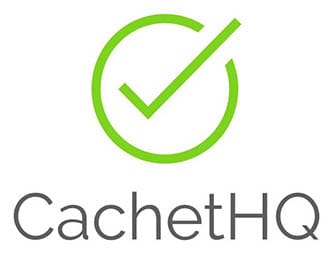
In this tutorial, we will show you how to install and configure CachetHQ on Ubuntu 16.04 LTS. For those of you who didn’t know, CachetHQ makes it simple to create a status page for your application, service, or network and it’s based on the Laravel framework.
This article assumes you have at least basic knowledge of Linux, know how to use the shell, and most importantly, you host your site on your own VPS. The installation is quite simple and assumes you are running in the root account, if not you may need to add ‘sudo‘ to the commands to get root privileges. I will show you the step-by-step installation of CachetHQ on a Ubuntu 16.04 (Xenial Xerus) server.
Prerequisites
- A server running one of the following operating systems: Ubuntu 16.04 (Xenial Xerus).
- It’s recommended that you use a fresh OS install to prevent any potential issues.
- SSH access to the server (or just open Terminal if you’re on a desktop).
- An active internet connection.
- A
non-root sudo useror access to theroot user. We recommend acting as anon-root sudo user, however, as you can harm your system if you’re not careful when acting as the root.
Install CachetHQ on Ubuntu 16.04 LTS
Step 1. First, make sure that all your system packages are up-to-date by running the following apt-get commands in the terminal.
sudo apt-get update sudo apt-get upgrade
Step 2. Install LAMP (Linux, Apache, MariaDB, PHP) server.
A Ubuntu 16.04 LAMP server is required. If you do not have LAMP installed, you can follow our guide here. Also, install all required PHP modules:
sudo apt-get install php7.0 libapache2-mod-php7.0 php7.0-mbstring php7.0-curl php7.0-zip php7.0-gd php7.0-mysql php7.0-mcrypt curl
Step 3. Configuring MariaDB for CachetHQ.
By default, MariaDB is not hardened. You can secure MariaDB using the mysql_secure_installation script. you should read and below each step carefully which will set a root password, remove anonymous users, disallow remote root login, and remove the test database and access to secure MariaDB:
mysql_secure_installation
Configure it like this:
- Set root password? [Y/n] y - Remove anonymous users? [Y/n] y - Disallow root login remotely? [Y/n] y - Remove test database and access to it? [Y/n] y - Reload privilege tables now? [Y/n] y
Next, we will need to log in to the MariaDB console and create a database for the CachetHQ. Run the following command:
mysql -u root -p
This will prompt you for a password, so enter your MariaDB root password and hit Enter. Once you are logged in to your database server you need to create a database for CachetHQ installation:
MariaDB [(none)]> CREATE DATABASE cachet; MariaDB [(none)]> GRANT ALL PRIVILEGES ON cachet.* TO 'cachetuser'@'localhost' IDENTIFIED BY 'your-password'; MariaDB [(none)]> FLUSH PRIVILEGES; MariaDB [(none)]> \q
Step 4. Installing CachetHQ.
First, download the source code with Git:
cd /var/www/html/ git clone https://github.com/cachethq/Cachet.git cd Cachet git checkout v2.3.9
We will need to change some folder permissions:
chown www-data:www-data -R /var/www/html/Cachet/
Configuring a database:
Rename the .env.example file to .env using the following command:
mv .env.example .env
Open the .env file and change the following lines:
### nano .env APP_URL=http://localhost -> APP_URL=http://your-domain-name DB_DATABASE=cachet -> DB_DATABASE=your-database-name DB_USERNAME=homestead -> DB_USERNAME=your-database-username DB_PASSWORD=secret -> DB_PASSWORD=your-database-password
Step 5. Installing Composer.
Composer is a dependency manager for PHP with which you can install packages. Composer will pull in all the required libraries and dependencies you need for your project:
curl -sS https://getcomposer.org/installer | sudo php -- --install-dir=/usr/local/bin --filename=composer composer install --no-dev -o
Set the application key:
Before going any further, we need to set the APP_KEY config. This is used for all encryption used in Cachet:
php artisan key:generate
Cachet comes with an installation command that will:
- Run migrations
- Run seeders (of which there are none)
php artisan app:install
Step 6. Configuring Apache web server for CachetHQ.
Create a new virtual host directive in Apache. For example, create a new Apache configuration file named ‘cachet.conf’ on your virtual server:
touch /etc/apache2/sites-available/cachet.conf ln -s /etc/apache2/sites-available/cachet.conf /etc/apache2/sites-enabled/cachet.conf nano /etc/apache2/sites-available/cachet.conf sudo a2enmod rewrite
Add the following lines:
<VirtualHost *:80> ServerAdmin admin@yourdomain.com DocumentRoot /var/www/html/Cachet/public/ ServerName your-domain.com ServerAlias www.your-domain.com <Directory /var/www/html/Cachet/public/> Options FollowSymLinks AllowOverride All </Directory> ErrorLog /var/log/apache2/your-domain.com-error_log CustomLog /var/log/apache2/your-domain.com-access_log common
Save and close the file. Restart the Apache service for the changes to take effect:
systemctl restart apache2
Step 7. Accessing CachetHQ Web Interface.
Cachet will be available on HTTP port 80 by default. Open your favorite browser and navigate to http://your-domain.com/ or http://server-ip and complete the required steps to finish the installation. If you are using a firewall, please open port 80 to enable access to the control panel.
Congratulations! You have successfully installed CachetHQ. Thanks for using this tutorial for installing CachetHQ on Ubuntu 16.04 LTS (Xenial Xerus) system. For additional help or useful information, we recommend you check the official CachetHQ website.